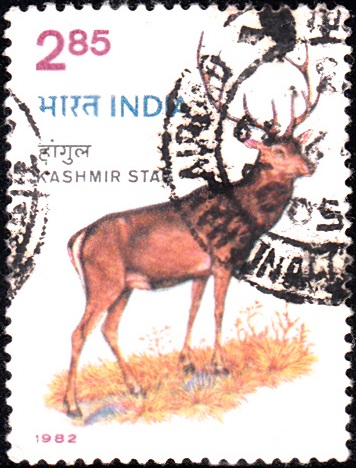
Kashmir Stag
A commemorative postage stamp on the Wildlife Week 1982 : Hangul (Red Deer Stag) :
Issued on Oct 1, 1982
Issued for : Indian Posts and Telegraphs Department is happy to issue a special stamp on Kashmir Stag.
Description of Designs : The design of the stamp is based on painting by HELMUT DILLER (Courtesy by: World Wildlife Fund-India). The first day cover and cancellation have been designed by Charanjit Lal.
Type : Stamp, Postal Used
Colour : Multicolour
Denomination : 285 Paise
Overall size : 3.91 X 2.90 cms.
Printing size : 3.55 X 2.54 cms.
Perforation : 13 x 13
Paper : Unwatermarked adhesive stamp paper
Number printed : 20,00,000
Number per issue sheet : 35
Printing process : Photogravure
Printed at : India Security Press
About :
- The Kashmir Stag or Hangul (Cervus elaphus hanglu) belongs to the Red Deer family of Europe. It is one of the two races of the Red Deer which are found in this sub-continent – the other being the Shou (Cervus elaphus wallichi) in Bhutan.
- The Hangul is listed as an endangered species in the Red Data Book of the International Union for Conservation of Nature and Natural Resources (IUCN). It numbers declined rapidly at an alarming rate during the years following the creation of India and Pakistan in 1947. An estimated population of 3000 was reduced to 170 in 1970. A Joint Project was undertaken by the Jammu & Kashmir Government and the IUCN / World Wild Life Fund in 1970 to conserve the Hangul and prepare a sound management plan for its sole major habitat – the Dachigam Sanctuary, about 21 km away from Srinagar. The success of this joint effort, implemented most energetically and effectively by the J & K Government, is visible in the rising numbers of the Hangul. Its population is now estimated at over 350.
- It is essentially a forest animal and is found either singly or in small groups of 2 to 16 members. The social system is matriarchal. They are on their home territories in the winter in Lower Dachigam, where the riparian forests are their fawning sites. The low level winter territory gives more or less direct access to a high level summer territory, where they go in search of grazing. They return to their home territory for the rutting season and stay there till the calves are born.
- The rutting season starts in mid September and ends by mid October. Its arrival is heralded by the loud roar of the master stag, in challenge to any other stag and establishment of its territory in the winter grounds with its harem of hinds. These stag desert the hinds at the end of the rutting season and the fawns are born in late May or early June. The fawns stay with the family group of hinds, which will also include the other young ones of yesteryears. The fawns reach maturity when three years old and thereafter leave the hinds at the start of the rutting season.
- The Hangul has four large natural predators in the forest. They are the Himalayan brown bear, the Himalayan black bear, the snow leopard and the leopard. Such predation is the natural law of the jungle which does not materially affect the status of the Hangul. It is a sad and unfortunate fact that the diminishing number of Hangul till 1970 was due to man. The biggest and strongest master stags, are the favourite targets of the poachers, for their magnificent head of antlers, with 11 to 16 points.
- Man, all the way down the ages, has hunted deer and this coupled with the ever increasing destruction of the forests has steadily reduced their numbers and habitats. This has also had its adverse reaction on the nearby human community, when the natural predators deprived of their legitimate prey, take to killing cattle and even man.
- The sound management plan now being implemented by the J & K State Government has resulted in a much brighter conservation situation in Dachigam. All the causes leading to the reduction in numbers of the Hangul and degradation of its habitats are being steadily eliminated or controlled, resulting in the increasing population of this truly majestic animal.
- (Text by courtesy : J.C. Sawhney, World Wild Life Fund, India).



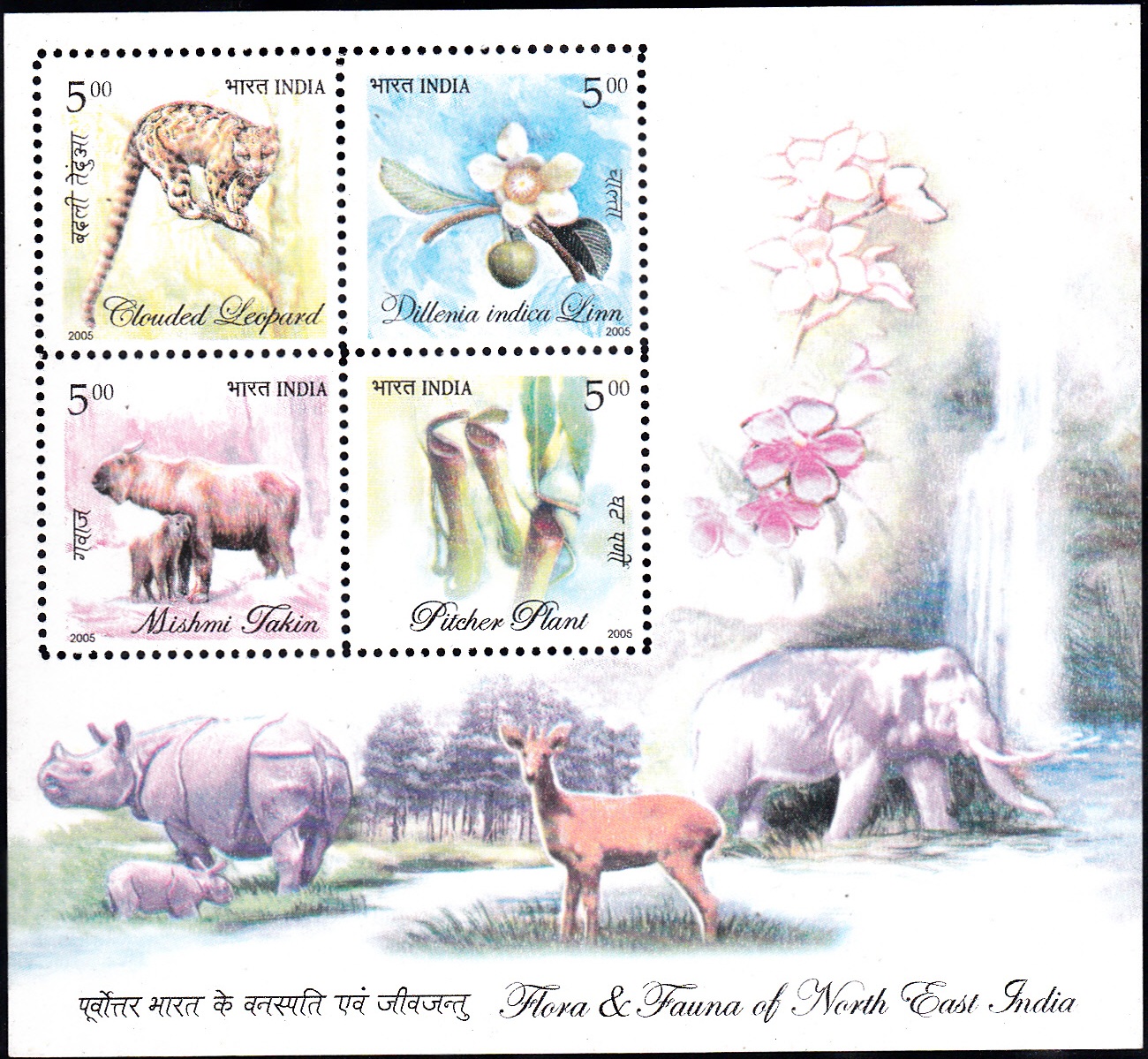
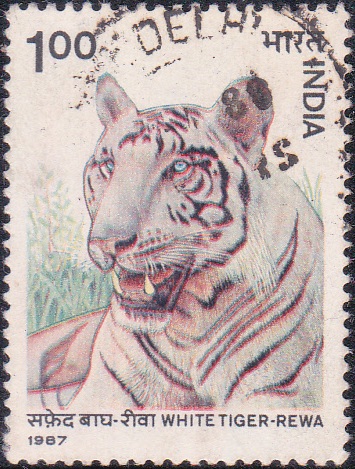

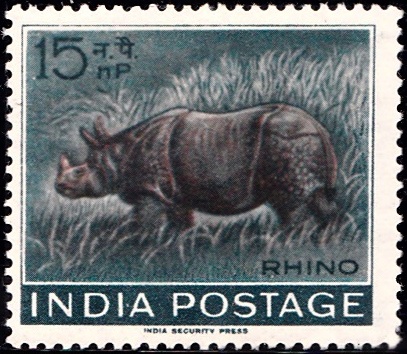
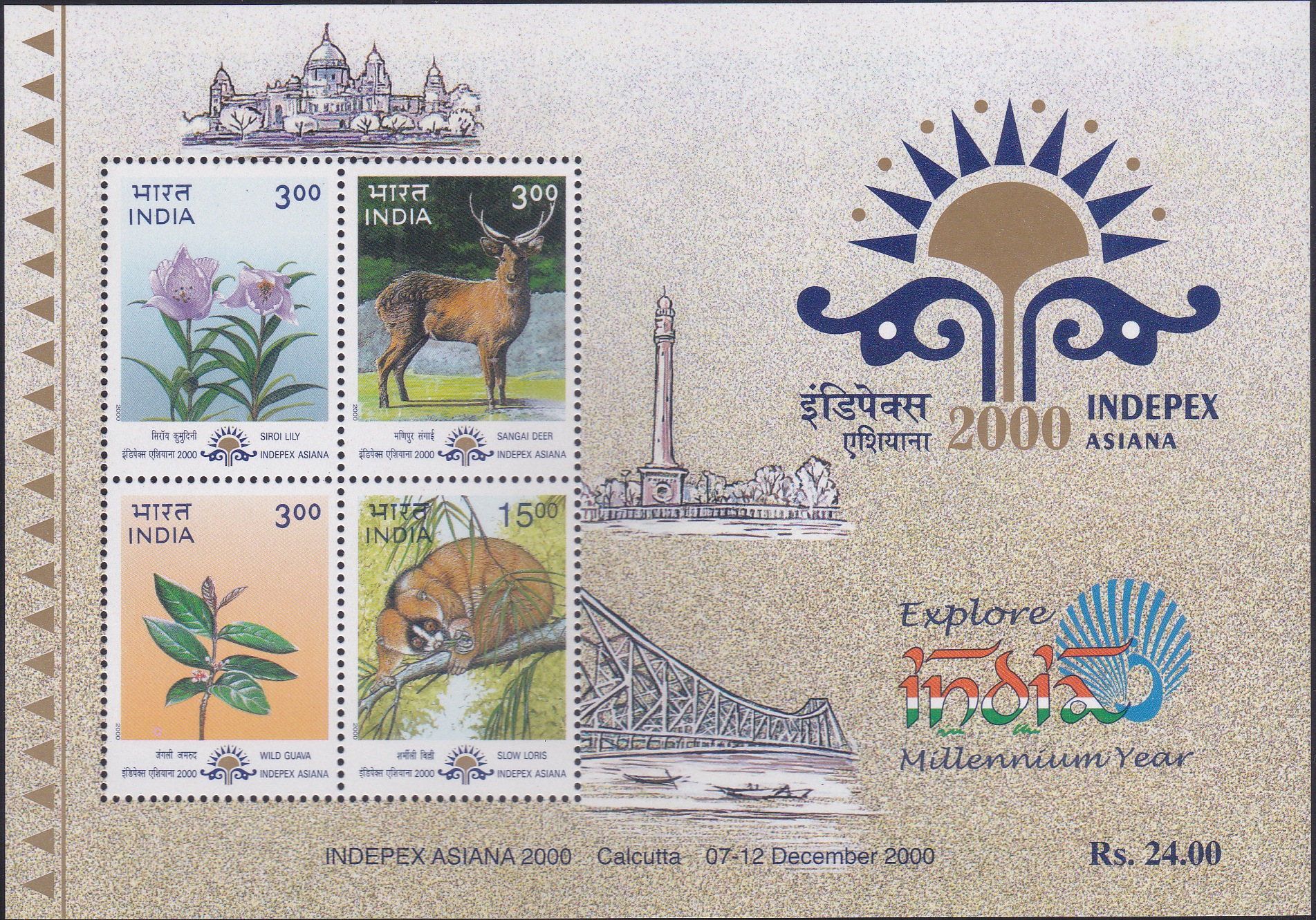
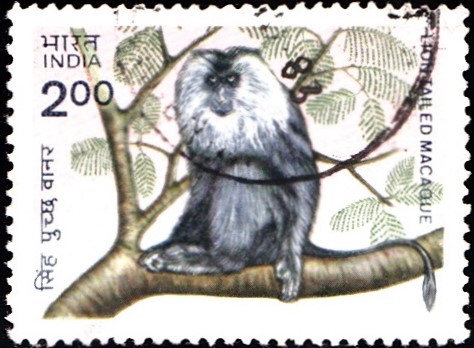
[…] rare interesting animals include Indian Wild-Ass of Kutch, the Kashmir-Stag or Hangul and the Brow-Antlered Deer of […]